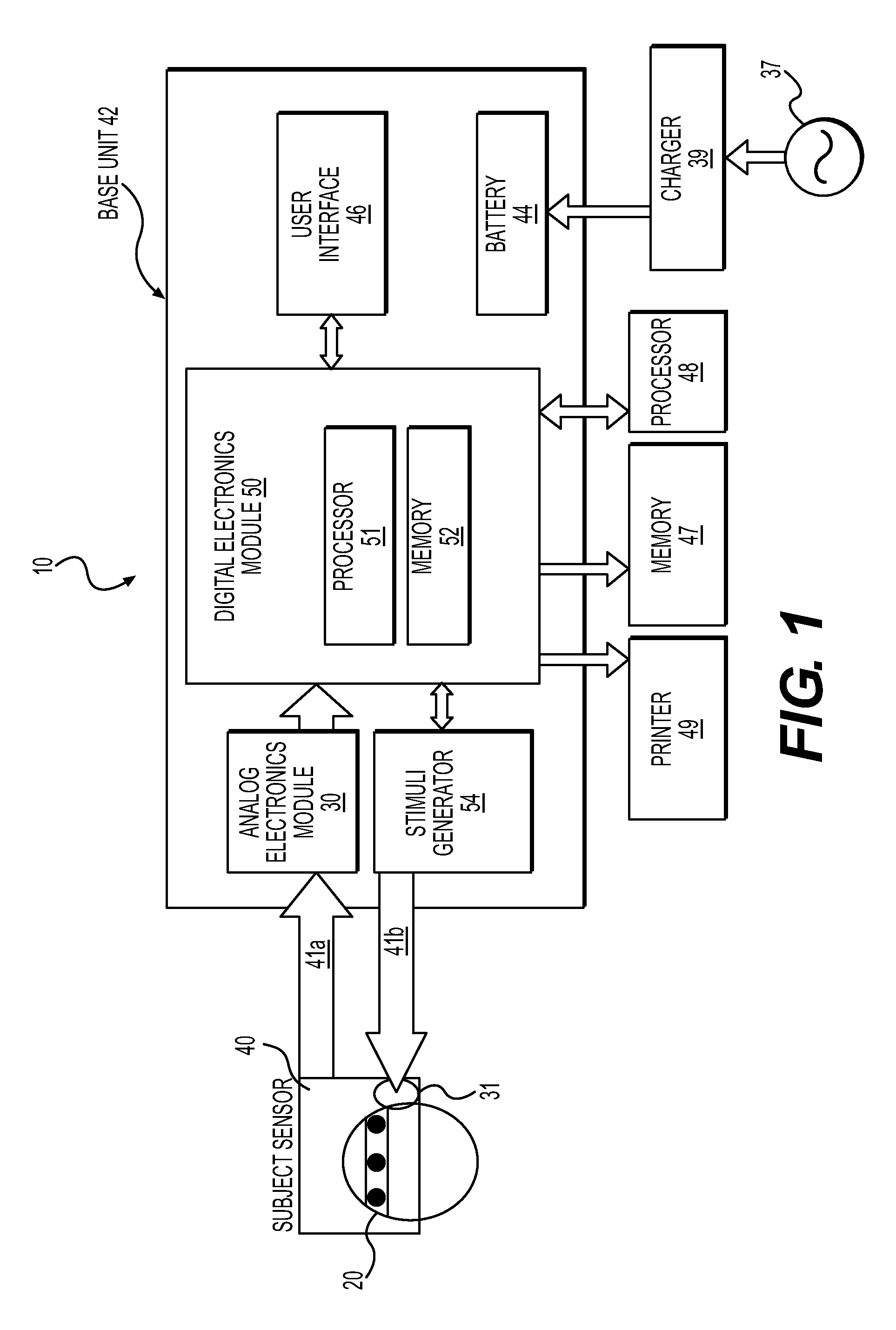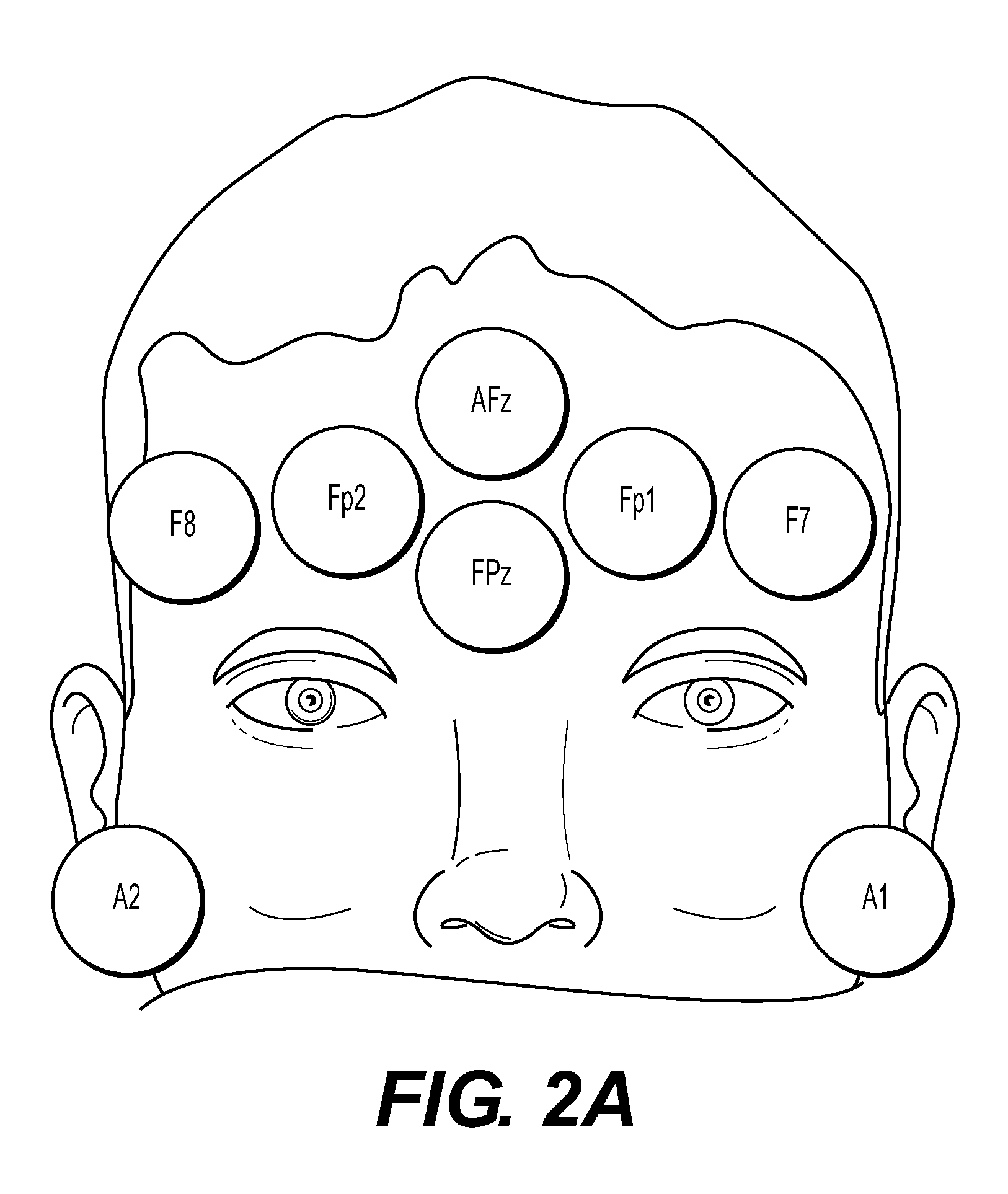Electrode array and method of placement
a technology of electrode arrays and electrodes, applied in the field of medical devices, can solve the problems of lack of tools in the field of objective and effective assessment of brain function in contemporary health care, lack of clinical laboratories with the capacity to effectively assess brain function or pathology, and lack of information about brain function
- Summary
- Abstract
- Description
- Claims
- Application Information
AI Technical Summary
Benefits of technology
Problems solved by technology
Method used
Image
Examples
Embodiment Construction
[0031]Reference will now be made in detail to the embodiments of the present disclosure described below and illustrated in the accompanying drawings. Wherever possible, the same reference numbers will be used throughout the drawings to refer to same or like parts.
[0032]While the present disclosure is described herein with reference to illustrative embodiments for particular applications, it should be understood that the disclosure is not limited thereto. Those having ordinary skill in the art and access to the teachings provided herein will recognize additional modifications, applications, embodiments, and substitutions of equivalents all fall within the scope of the invention. Accordingly, the disclosure is not to be considered as limited by the foregoing or following descriptions.
[0033]Other features and advantages and potential uses of the present disclosure will become apparent to someone skilled in the art from the following description of the disclosure, which refers to the ac...
PUM
 Login to View More
Login to View More Abstract
Description
Claims
Application Information
 Login to View More
Login to View More - R&D
- Intellectual Property
- Life Sciences
- Materials
- Tech Scout
- Unparalleled Data Quality
- Higher Quality Content
- 60% Fewer Hallucinations
Browse by: Latest US Patents, China's latest patents, Technical Efficacy Thesaurus, Application Domain, Technology Topic, Popular Technical Reports.
© 2025 PatSnap. All rights reserved.Legal|Privacy policy|Modern Slavery Act Transparency Statement|Sitemap|About US| Contact US: help@patsnap.com



